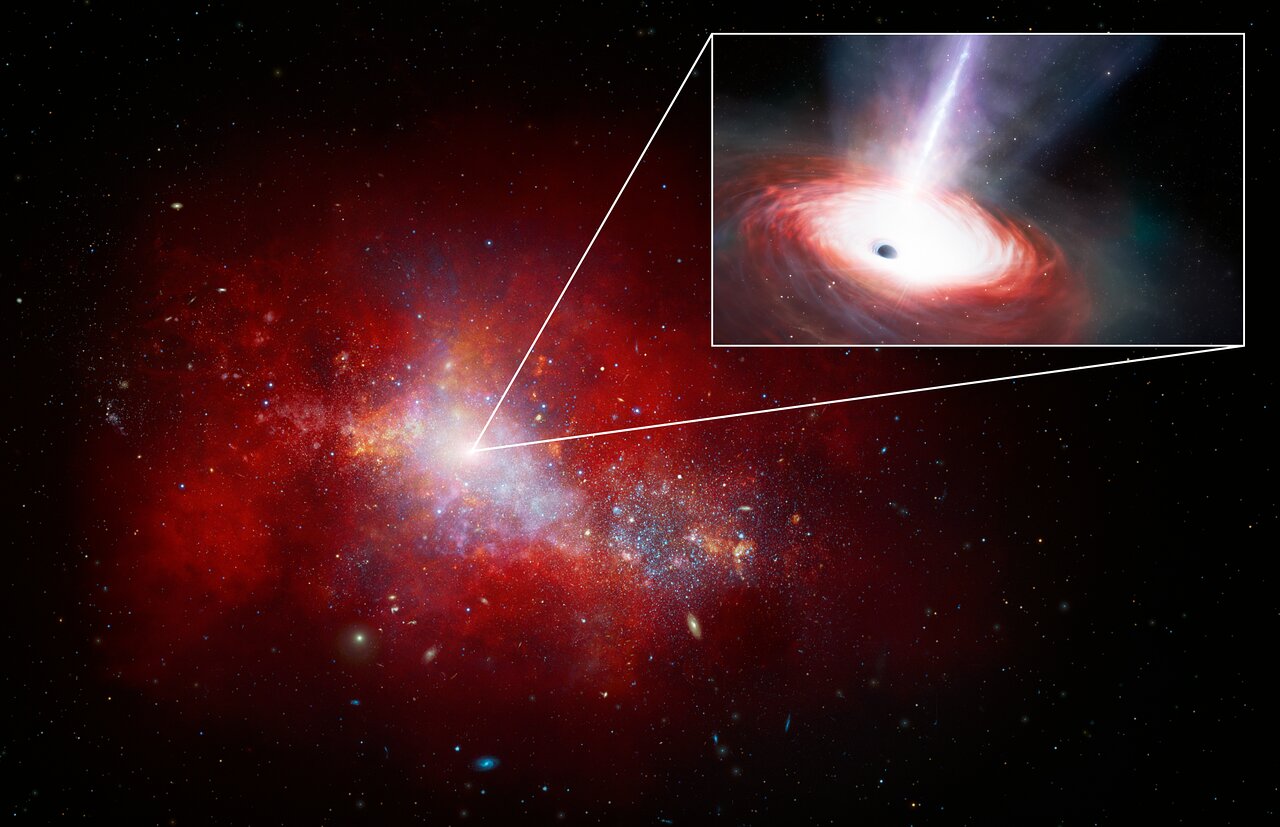
November 12, 2024 by Mark Thompson
Collected at: https://www.universetoday.com/169277/early-black-holes-fed-40x-faster-than-should-be-possible/
The theory goes that black holes accrete material, often from nearby stars. However the theory also suggests there is a limit to how big a black hole can grow due to accretion and certainly shouldn’t be as large as they are seen to be in the early Universe. Black holes it seems, are fighting back and don’t care about those limits! A recent study shows that supermassive black holes are growing at rates that defy the limits of current theory. Astronomers just need to figure out how they’re doing it!
Black holes usually form from the collapse of a massive star. The origin of their larger cousins, the supermassive black holes found at the centre of most galaxies, remains a mystery. Theories suggest they grew over billions of years by consuming stars, gas and maybe even other black holes. Others suggest they formed from the primordial conditions of the early Universe or maybe from dense clusters of hot young early stars. The immense gravity from them plays a significant part in shaping stellar formation and the evolution of their host galaxy. If a supermassive black hole is actively accreting material, they are often seen as quasars, extremely luminous objects that are visible across million, even billions of light years.

A recent discovery by a team of astronomers revealed a low-mass supermassive black hole that was devouring material at an extreme rate. The black hole is at a distance that means we are seeing light as it was 1.5 billion years after the Big Bang. This means we can learn about the processes that govern these objects when the Universe was a lot younger.
The black hole known as LID-568 was detected by a team of astronomers led by the International Gemini Observatory/NSF NOIRLab astronomer Hyewon Suh. It was detected in images from the James Webb Space Telescope following on from assessment of galaxies from the Chandra X-ray Observatory’s COSMOS legacy survey. The galaxies observed are bright X-ray sources but not visible in optical or near-infrared surveys. The team used JWST’s NIRSpec instrument that is capable of getting a spectrum off each individual pixel in its field of view.

The study allowed the team to make the rather unexpected discovery of immense flows of gas out from the region around the centre of the black hole. Suh and team could infer from this that a significant fraction of the growth of LID-568 may well have occurred in one single rapid accretion event. They calculated that it must be feeding on matter at a rate which is 40 times the Eddington limit. The limit relates to the maximum luminosity it can achieve acknowledging there is a balance between the outward force of radiation and the inward force of gravity. When the two forces balance, it is known as hydrostatic equilibrium. If an object exceeds the limit then an immense outward force will result in it losing mass. When the luminosity of LID-568 was calculated it was much higher then should be theoretically possible.
The discovery provides an excellent opportunity for astronomers to study black holes in the early Universe and in particular those that challenge the Eddington limit theory. It would however suggest that the outflows of energy are acting to release energy that has built up during extreme accretion periods. Follow up observations are required.
Source : NSF NOIRLab Astronomers Discover the Fastest-Feeding Black Hole in the Early Universe

Leave a Reply